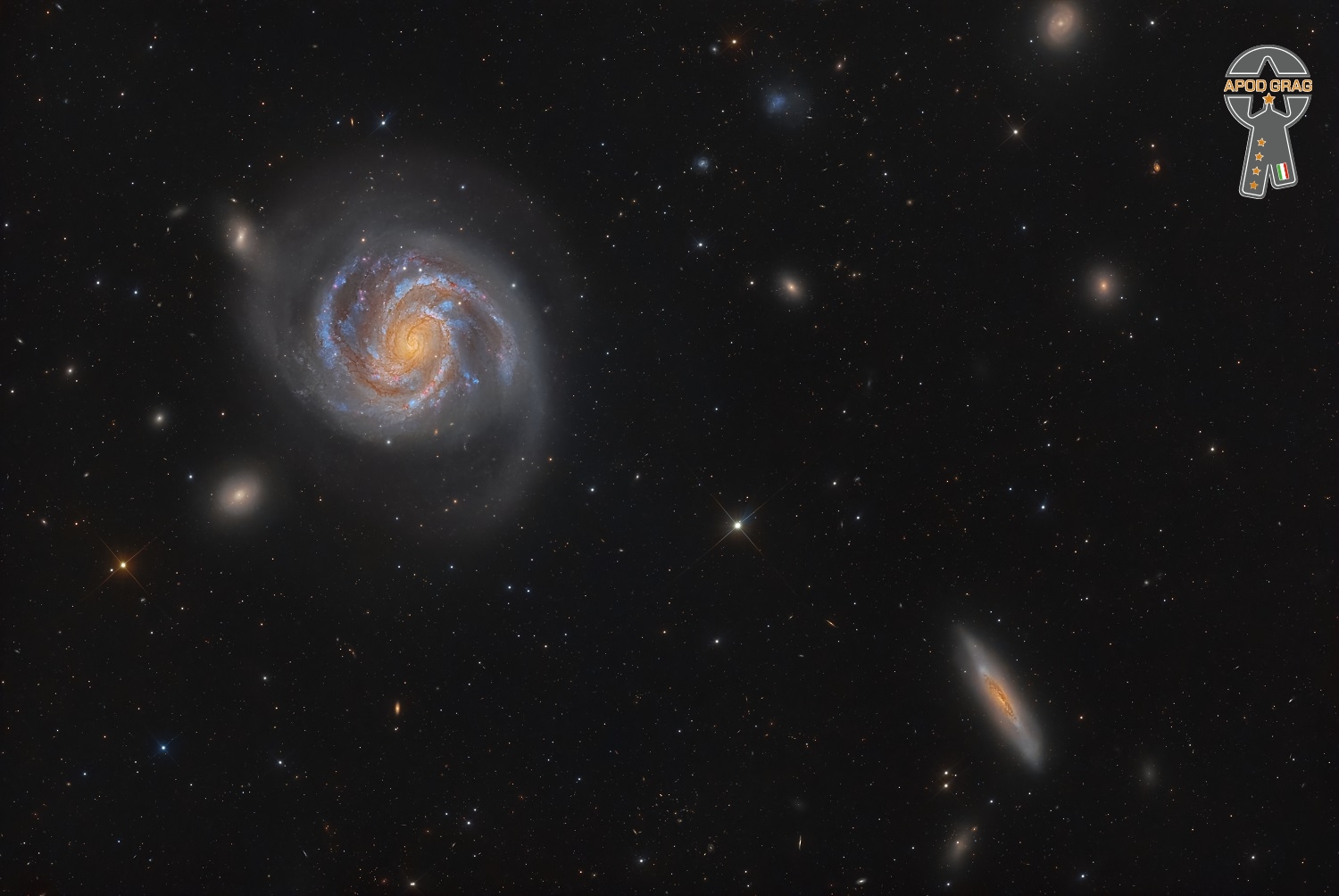Cosmos M100
The M100 galaxy, cataloged as Messier 100 and NGC 4321, is one of the most impressive and widely studied spiral galaxies in the sky. Located in the Berenice’s Hair constellation, approximately 53 million light years from us,
M100 is an important part of a large group of galaxies located in our cosmic neighborhood : Virgo cluster.
M100 is listed as a spiral galaxy, implying that it has well-defined and symmetrical spiral arms that move out from its central core. With a diameter of approximately 160,000 years light, this galaxy is considered one of the largest and most luminous in the Virgo cluster, making it larger than our Milky Way.
Its spiral arms are home to around 100 billion stars, with magnificent young massive blue stars, gaseous nebulae and dust clouds.
The arms are places where star formation is very active, supported by the vast reserves of gas present in the galaxy.
M100 is also notable for the large number of supernovae that have been observed within it. Over the past century, five supernovae have been observed, the most recent of which is SN 2006X, a Type Ia supernova, which was discovered in February 2006. Astronomers are very interested in Type Ia supernovae because they are a standard for measuring cosmic distances, which contributes to the study of the expansion of the universe.
Just like most spiral galaxies, M100 has an active galactic core that could host a supermassive black hole. Its rotation has been carefully studied to understand the distribution of dark matter in the galaxy.
Astronomers have discovered that the outer parts of the galaxy rotate at a faster rate than visible matter alone could explain, providing further evidence for the presence of dark matter.
We can observe several galaxies and cosmic objects in our image,
in particular the famous galaxy NGC 4312. It is a spiral galaxy of type SA(rs)bc, distant about 55 million light years from Earth. She too is a member of the Virgo cluster.
Compared to other spiral galaxies, NGC 4312 is distinguished by its inclination, offering an almost “edge-on” view, which makes the observation of its spiral structure more delicate.
NGC 4312 spans about 45,000 light years, making it a relatively small galaxy compared to M100.
